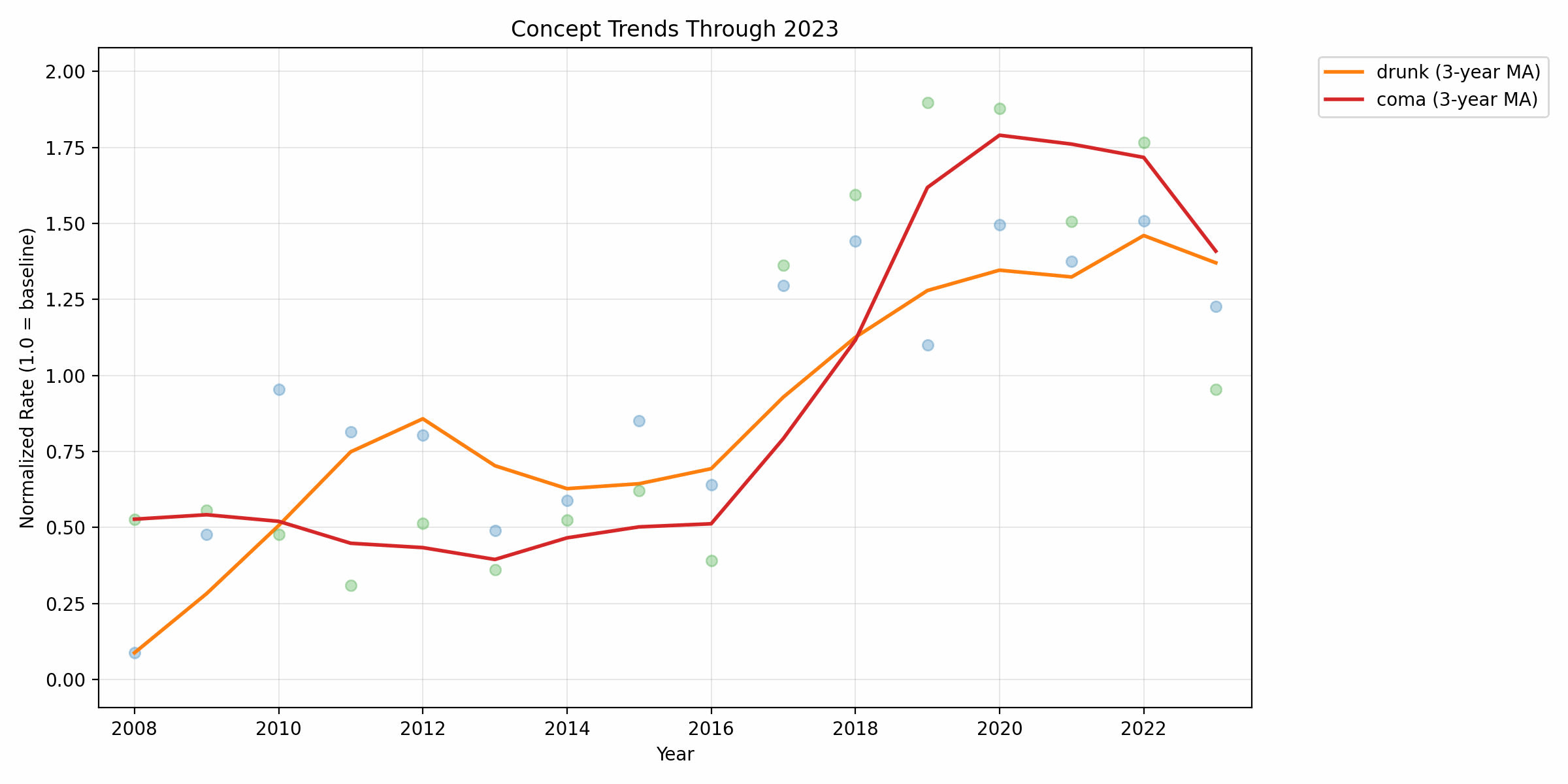Hi Richard, yes, certain keywords are banned. What I’m measuring is semantic similarity. For example, a video titled “rape” will be banned, but a video suggesting rape may not be. By using text embeddings, we’re finding the titles most similar to the concept of rape. To find trends over time, we’re counting how many of those titles are found per year, weighted by the total number of titles in a year.
With respect to certain keywords, we see a decline in trends starting after 2020, likely because of Nicholas Kristof’s NYT piece “The Children of Pornhub”, which led to both stricter keyword standards and a mass removal of videos. “Drunk” and “coma” capture “incapacitation” as a euphemism, which was used as a way to get around explicit keyword policing.
The fact that we do see declines in some areas and we have a known cause leads me to believe the data is reliable—it’s not all showing a line straight up.

Thanks for the response Mitchell! It is in fact wholly AI-generated (claude-sonnet-4-5-20250929) so the work is, in fact, a valid ClaudoBiography. Structurally it inherits from Lazarillo de Tormes (1554), the original “picaresque”, and constitutes an update of sorts to that work.